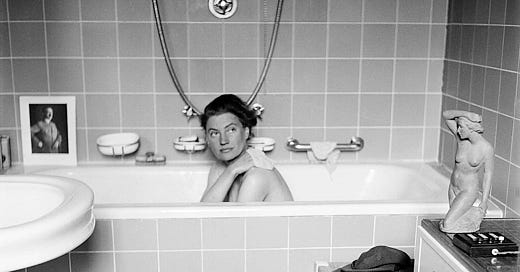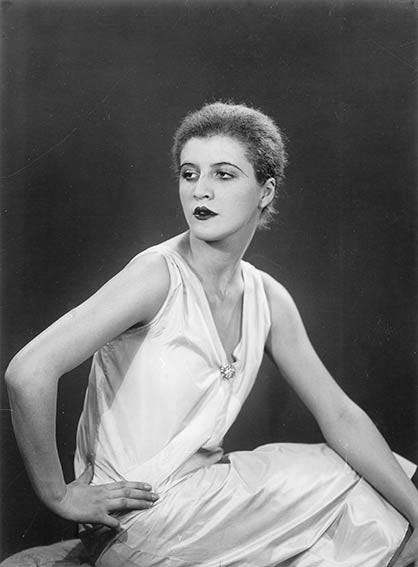Photographer Lee Miller is back in the news, played by Kate Winslet in a biopic. I haven’t seen it, so have no idea how is represents the gaudy and cacophonous carnival that was her life, particularly after 1929, when she arrived in Paris and announced to Man Ray, then the city’s busiest photographer, that he had a new student. Brushing aside his protests, she was soon sharing his studio, his apartment and his bed.
The chemistry generated by the improbable partnership between the priapic, febrile Ray and the relentlessly ambitious Miller, seventeen years his junior, produced a handful of images now recognised as milestones in the development of the modern artistic imagination. For Miller, Ray painted his most famous canvas, Hour of the Observatory: The Lovers, with her lips floating like a crimson dirigible above Montparnasse. Jean Cocteau used her in his film Le Sang d’un Poete. Ray filmed her too, but with a smaller public in mind, ie, himself, for the erotic Self Portrait, in which she cavorted nude in their bed and played lasciviously with suggestive phallic objects.
As Vogue’s war correspondent, she followed the Allied armies through France and Germany in 1944, sticking with them even into Buchenwald and Dachau. Paradoxically, her best-known image from this period is as the subject of a photograph, not the taker. Locating Hitler’s apartment in Munich, she slept in Eva Braun’s bed, and had herself snapped taking a bath in the Fuhrer’s primly ordinary bathroom.
I was more interested in her spell with Ray, which I had a chance to discuss with someone who knew both Miller and Ray, as well as Alice Prin, aka Kiki de Montparnasse, whom Miller succeeded in Ray’s bed.
Jacqueline Goddard née Barsotti, was Ray’s last Paris model – and the only one, it’s said, that he didn’t sleep with. He may have thought of her as a subject second and a friend first. She described a key moment which they shared during the decline of Ray’s relationship with Miller.
Jacqueline Goddard, photographed by Man Ray.
“I met Man in Le Dôme,” she confided. “I don’t remember when. He was still with Lee, though it was ending. He was sure there were other men. (I knew there were, but I could not say that. None of us could.) He was angry, saying terrible things about Lee…We had a drink. It was raining outside, and he wore a long impermeable…(raincoat) And as he moved, I heard something heavy bump against the leg of the chair. And I knew it was a gun. He was a passionate man. And he loved her. Perhaps he would not have shot her…one never knows…”
“But he didn’t,” I said.
Jacqueline smiled. “I like to think I am responsible for that. He got up to leave, and I said I would walk with him. We left the Dôme, and walked down Edgar-Quinet in the rain.”
“We walked past his studio on rue Campagne-Premiere. The light was on. Lee was there. Alone…? Who could tell? But I feared that, if he went in and found her with someone, he would use the gun. So I said, ‘Man, walk with me. Walk with me in the rain.’ And he walked away, and Lee Miller and Man Ray were saved.”
I often think of them strolling along the boulevard, with the wall of Montparnasse cemetery just across the street, and the soft, cold rain sifting down through the plane trees to bead on Jacqueline’s magnificent head and the set, angry face of the little man with the pistol in his raincoat pocket.
When they returned to the studio, a morose Ray placed the gun on a table, added a piece of rope and a bottle that might have contained poison, and sat down next to them, inviting Jacqueline to photograph the scene: the artist contemplating suicide.
A footnote. Jean-Luc Godard chose the street in front of Man Ray’s studio to film the shooting death of Jean-Paul Belmondo in A Bout de Souffle. As Godard famously remarked, “all you need to make a film is a gun and a girl.” Susan Sontag in her film Duet for Cannibals amended that to “All a revolution needs is a gun, a girl - and a cause.” Guns and girls… there’s a truth somewhere in there.





